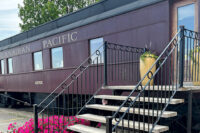Why is the City of Lethbridge spending $43.8 million on cycle paths?
By Letter to the Editor on February 19, 2021.
The City of Lethbridge Cycling Masterplan was adopted by council on July 17, 2017. This plan identifies two phases with estimated costs (using 2016 dollars) of $21.9 Million per phase, for a combined total cost of $43.8 Million. According to the plan, community input was gathered in a telephone survey of 400 people from January 18 to 25, 2016, and through a series of events between March and December 2016.
What will this $43.8 million expenditure do for Lethbridge? The plan states the following goals: “More people cycling, Cycling is safe, Cycling is desirable, Cycling is connected, Cycling is understood, and Cycling is implemented”.
Wow. Is this a marketing plan to convince people to try cycling?
We have significant concerns. First, at least two of the events used to gather community input — Jane’s Ride and Tour of Alberta — are cycling events. It would be expected that attendees of those events would be biased in favour of cycling initiatives.
Second, the telephone survey only surveyed 400 citizens. Of those 400 people, survey results were based only on people who actually owned a bike (65% of respondents).
All Lethbridge taxpayers are going to foot the $43.8 million bill for the Cycling Masterplan, but only the 260 bike owners who answered their phone had direct input into the survey?
Even more interesting? Here is what they said:
¥ 232 people said they would ride more if they felt safer.
¥ 76% don’t ride at all in the Winter, another 10% ride less than once a month
We would like to know from those 232 people how much more they would ride if they felt safer? Once? Once a week? Once a month?
More importantly, we would like to know if any community members were asked if they were willing to spend $43.8 million on bike paths?
Before spending any more money to implement this plan, city council and administration should ask some critical questions:
How important are bicycle paths (unimportantÉcritical?) to the general population?
How much are the existing paths and lanes used and when? A simple bicycle usage traffic count would suffice. We shut down 7 Avenue at 13 Street, yet you can wait a long time before seeing a lone bicycle that could have crossed at a light instead.
Are these lanes worth the restriction to traffic?
Does the public consider the estimated expenditure of $43.8 million a good use of funds?
To access the Cycling Masterplan: https://www.lethbridge.ca/living-here/Projects-Initiatives/Current-Projects/Pages/cyclingmasterplan.aspx
Lethbridge Transparency Council
-1




